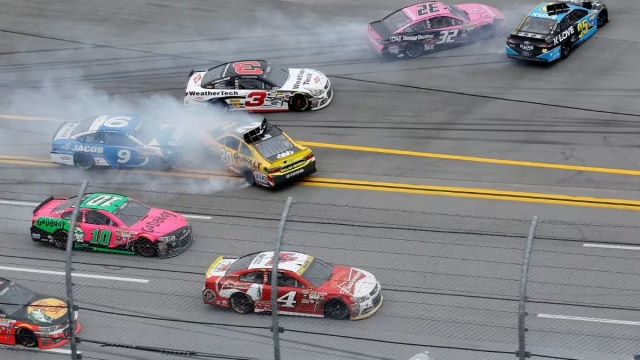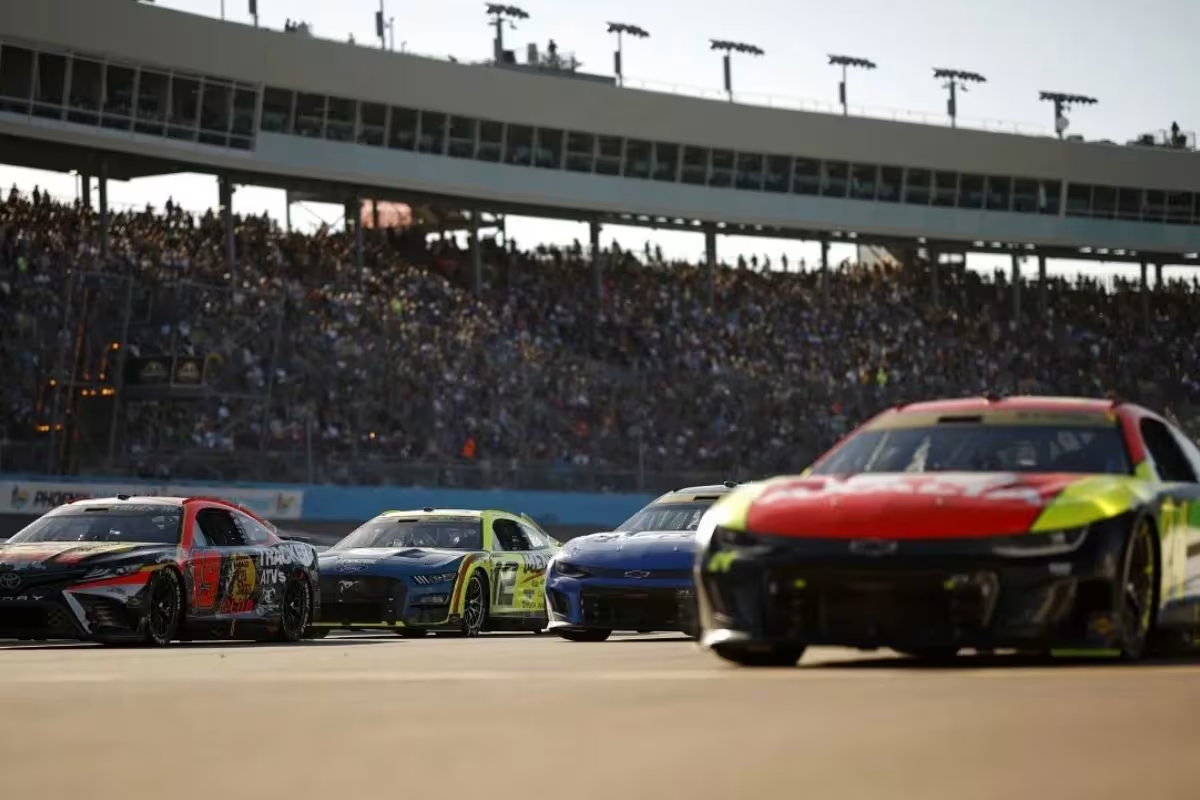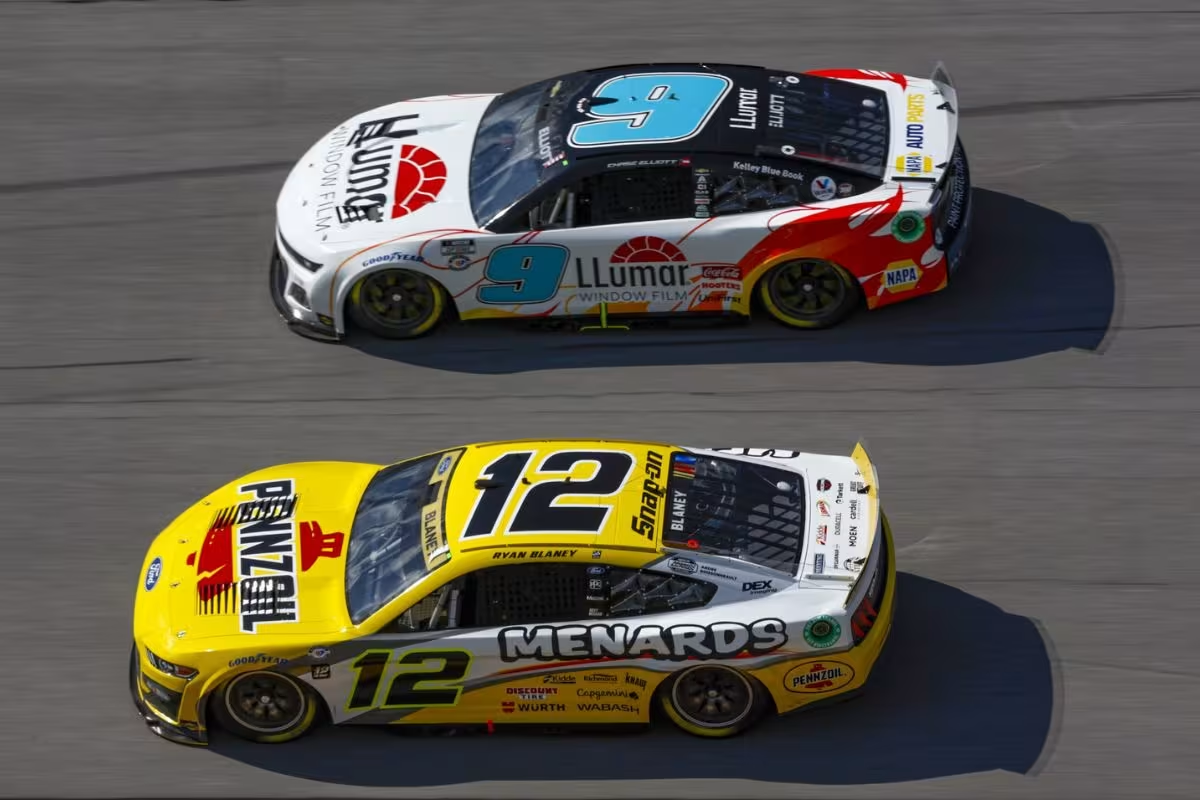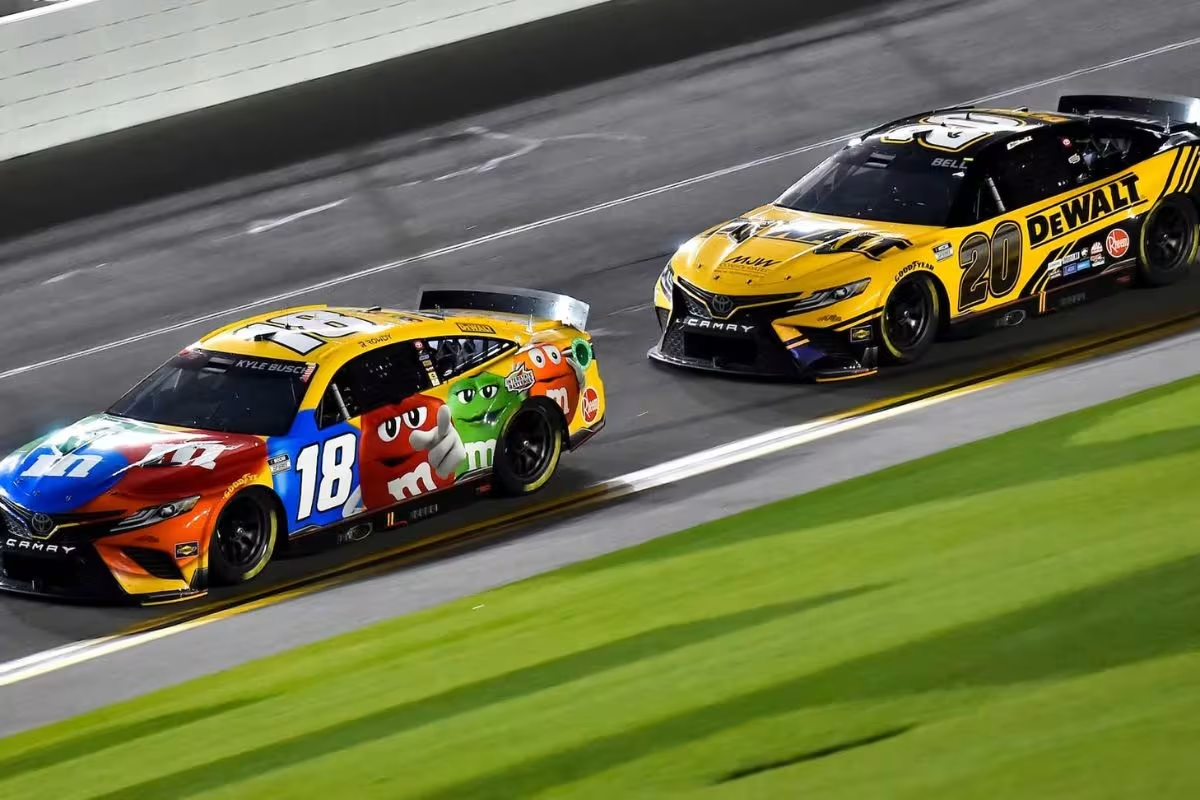Talladega Race Controversy: The YellaWood 500 at Talladega Superspeedway has ignited a heated debate about NASCAR’s commitment to its own rules, especially regarding driver safety and fairness. Denny Hamlin‘s allegations pointed out inconsistencies, particularly with the foam padding requirement, which wasn’t enforced for some cars. This raised concerns about favoritism in how rules are applied.
Key Highlights
- The foam rule, effective since May 2022, mandates immediate replacement of damaged foam for safety, which was ignored during the Talladega race.
- Ricky Stenhouse Jr.’s car damage raised questions about the legitimacy of the race outcome amid allegations of officials’ rule negligence.
- NASCAR’s inconsistent enforcement of the DVP policy allowed drivers involved in crashes to repair cars and continue, undermining competitive integrity.
- Allegations of favoritism towards certain drivers, like Chase Elliott and Chase Briscoe, fueled concerns about unequal rule application by NASCAR officials.
- Denny Hamlin’s podcast highlighted these discrepancies, calling for greater transparency and adherence to established NASCAR regulations for fairness.
Overview of the YellaWood 500
The YellaWood 500, held on October 6, 2024, at Talladega Superspeedway, brought the exciting drama that NASCAR fans love. Talladega is the longest track in the series and is famous for its thrilling speeds and unpredictable outcomes. This year’s race was no different and ended with a major controversy just five laps from the finish.
The chaos began with Austin Cindric, who, after getting bumped by Brad Keselowski, caused a massive crash that involved 28 cars, including eight playoff contenders. This wreck highlighted the dangers of racing at superspeedways, where close driving can quickly lead to big accidents. The crash changed the leaderboard and raised questions about driver behavior and NASCAR’s rules on contact racing.
After the incident, the playoff standings were significantly affected, with key drivers at risk of elimination due to their damaged cars. The final laps were filled with tension among teams and fans, sparking debates about accountability and how officials manage the sport’s fairness.
Denny Hamlin’s Podcast and Allegations
In a recent episode of his podcast, Actions Detrimental, Denny Hamlin brought to light serious allegations regarding NASCAR’s adherence to its own rules during the YellaWood 500 at Talladega Superspeedway. Hamlin, a seasoned competitor and insightful commentator, expressed concern over what he perceived as a notable breach of protocol following Ricky Stenhouse Jr.’s controversial victory in the race.
Hamlin pointed out that Stenhouse’s car exhibited clear signs of damage, specifically noting that the left door had sustained a notable impact during a crash, resulting in the loss of essential foam padding that is mandated by NASCAR regulations. This absence left a gaping hole, raising questions about the integrity of the vehicle and, by extension, the legitimacy of the race outcome.
Furthermore, Hamlin referenced discussions circulating within the racing community, particularly a clip shared by Dirty Mo Media featuring Jeff Gluck, which alluded to exceptions made for drivers Chase Elliott and Chase Briscoe in similar scenarios. By juxtaposing these instances with Stenhouse’s situation, Hamlin highlighted a perceived inconsistency in NASCAR’s enforcement of its rules, suggesting that favoritism may have come into play.
“It was never intended to take good race cars out of the race, and so they’ve looked at this and they’ve said, Hey, you know, we want to try to; if there’s a possible way to keep them in the race, let’s keep that going.” – Gluck
NASCAR’s Foam Rule and Discrepancies
NASCAR’s foam rule, outlined in Section 3337 of the Cup Series rulebook, mandates the installation of energy-absorbing foam blocks on the outer surfaces of both the left and right side doors to improve driver safety. This regulation is essential in protecting drivers during high-speed collisions, as the foam is designed to absorb impact energy, thereby reducing the risk of injury. Effective May 4th, 2022, any damaged or crushed B-door foam must be replaced immediately.
However, the enforcement of this rule has recently come under examination. Particularly, during the Talladega race, both Brad Keselowski (No. 6) and Chris Buescher (No. 17) competed without their roof rails, a crucial safety concern, yet they faced no disqualification. This lack of enforcement raises questions about the consistency and integrity of NASCAR’s regulatory framework. In contrast, Denny Hamlin recalled a previous instance where Josh Berry was disqualified for missing bolts on his windshield, highlighting a potential disparity in how rules are applied across different situations.
“Because they said, we’re trying to not basically, though they’re, they’re trying to use common sense, I guess, and change the policy a little bit.”- Gluck
Jeff and Jordan discuss the discrepancies involving the current DVP policy. 🗣️ pic.twitter.com/XNyzk007C6
— Dirty Mo Media (@DirtyMoMedia) October 7, 2024
Such discrepancies not only erode trust in NASCAR’s governance but also pose serious implications for driver safety. The inconsistency in rule enforcement suggests a need for a reevaluation of how regulations are monitored and applied. As the sport evolves, ensuring uniform adherence to safety protocols must remain a paramount objective, lest the integrity of NASCAR’s commitment to driver welfare be called into question.
DVP Policy and Implications
While the intention behind the DVP (Damaged Vehicle Policy) is to maintain competitive integrity and guarantee that safety is prioritized, recent events at Talladega have sparked considerable debate regarding its application and effectiveness. The discrepancies highlighted by Jeff Gluck reveal a notable departure from the established DVP guidelines, which stipulate that a driver unable to return to the pits under their own power should record a DNF (Did Not Finish). However, during the recent race, nearly all drivers involved in on-track incidents were afforded the opportunity to make repairs and continue racing, raising questions about the consistency of NASCAR’s enforcement.
The remarks from former driver Elton Sawyer highlights a critical tension within the policy; the intent to preserve the competitive field often clashes with the stringent application of safety protocols. The allowance for drivers like Chase Briscoe and Chase Elliott to re-enter the race post-crash exemplifies a potential shift towards a more lenient interpretation of the DVP. While this approach may seem to reflect a pragmatic application of common sense, it threatens to undermine the very principles of fairness and transparency that NASCAR seeks to uphold.
News in Brief: Talladega Race Controversy
The controversy at Talladega during the YellaWood 500 raises important questions about NASCAR’s commitment to its own rules. The inconsistent application of the foam rule and the Damage Vehicle Policy (DVP) highlights issues of fairness and consistency in officiating.
These problems not only threaten the integrity of the sport but also erode trust among drivers and fans. A careful review of these regulations is needed to ensure fair competition and maintain NASCAR’s credibility.
ALSO READ: Controversial Victories at Talladega Superspeedway: Unpacking the Chaos Behind the Wins




